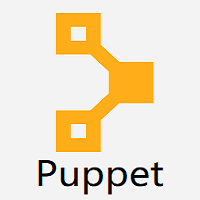Puppet Tutorial
Puppet is an open-source DevOps system management tool. It is used to centralize and automate the configuration management procedure. This tool is developed using Ruby DSL (domain-specific language). Puppet tool deploys, configures, and manages the servers. This tutorial will help in understanding why Puppet is so popular and what makes it unique when compared to other configuration management tools. All the examples in this tutorial are tested. This code can be used with any puppet configuration by changing the current defined names and variables. What is Puppet?
Features of PuppetFollowing are the features of Puppet: Platform Support Puppet is compatible with all platforms that support Ruby, like Microsoft Windows, Linux, MacOS X, etc. Scalable The puppet was developed in 2005; therefore, many different organizations, including medium and large, have deployed Puppet, and hence its scalability is very large. Documentation Puppet provides a large number of well-developed wiki pages with detailed documentation. Idempotency Unlike other configuration management tools, in Puppet, we can safely run the same set of configurations multiple times on the same machine. Means, after deploying a configuration on any machine, the puppet keeps verifying those configurations in certain intervals. Open-Source A puppet is an open-source tool, and because of this feature, it is easy to extend it to build custom libraries and modules. Reporting Compliance The enterprise version of the puppet supports graphical reporting with the help of this you can simply visualize the infrastructure, communicate, and quickly respond to the modifications. It provides you the real-time visibility into the effects of changes, which allows you to see what's going on your infrastructure. Cost-Effective When you have many numbers of systems and want to make some minor code changes, then Puppet helps to reduce the effort and cost. Faster Puppet allows DevOps professionals and System Administrators to work more quickly and effectively. Growing Fast Today, many companies have adopted puppet to manage their infrastructure, such as Google, Red Hat, AT&T, Spotify, AON, US Air Force, etc. PrerequisitesBefore proceeding with this tutorial, you should have a basic knowledge of system administration, network protocol communication, and infrastructure. To automate the infrastructure provisioning, we should have a basic understanding of Ruby scripts and the system where we want to use Puppet. AudienceThis tutorial is created for those who would like to learn the basics of Puppet. This tutorial will provide enough understanding to reduce the complexity of managing infrastructure. After completion of this tutorial, you will get a basic level of understanding of Puppet and workflow. This tutorial will also give you a good understanding of the configuration of Puppet in a preconfigured infrastructure and how to use it for automation. ProblemsWe assure you that you will not find any difficulty while learning our Puppet tutorial. But if there is any mistake in this tutorial, kindly post the problem or error in the contact form so that we can improve it.
Next TopicConfiguration Management
|
 For Videos Join Our Youtube Channel: Join Now
For Videos Join Our Youtube Channel: Join Now
Feedback
- Send your Feedback to [email protected]
Help Others, Please Share










